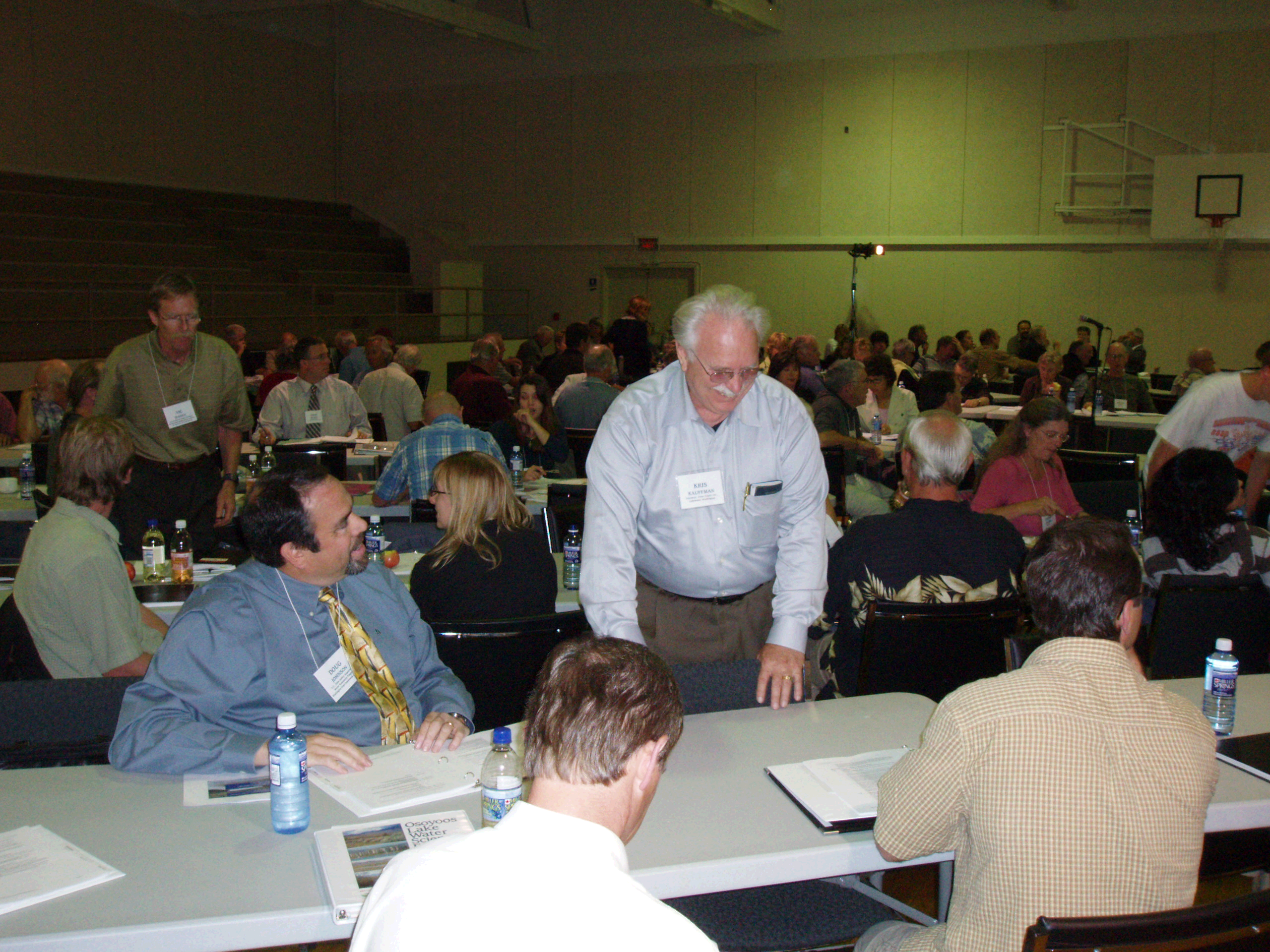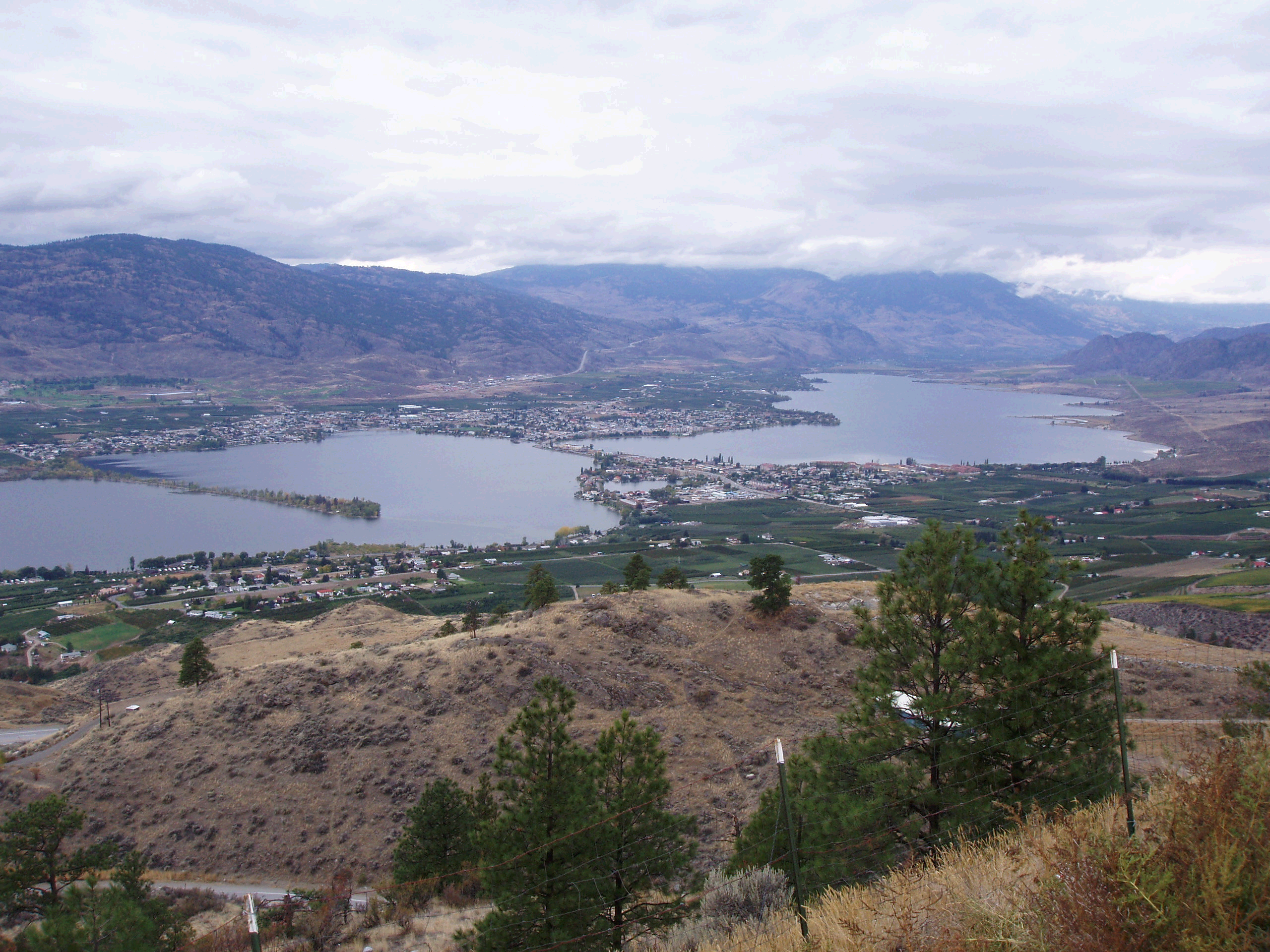“Wherever you go, there you are” – Mac Rauch (Buckaroo Banzai)
There will be heavy-hitters from Ottawa and Washington D.C. in Osoyoos next month, but they won’t be wearing dark suits and carrying brief cases. They’ll be listening and talking to US and Canadian locals about the renewal of the Osoyoos Lake Operating Orders, hearing water science updates, and sharing in-season sockeye salmon, apples and pears.
I’m really interested in the potential of this cultural and political mixing, and the opportunity to be innovative when you take a bilateral agreement down home.

- Bringing it all back home: In 2007, locals from the towns of Osoyoos and Oliver (in Canada) gathered with residents of Oroville and other communities just south of the border, joined by leading scientists, politicians, policy makers and agency folks – to discuss international policy for Osoyoos Lake.
Every good relationship needs care and communication – including our international co-habitation of Osoyoos Lake, which crosses the 49th parallel. Most Canadians are a bit on edge about the US thirst for water. We want to cooperate, but there is a cautious pragmatism. The Okanagan has relatively low flows, and we rely on irrigated agriculture. On the other side, they have trouble in the Okanogan (American spelling) “keeping up with the Canadians,” who come in droves to buy inexpensive vacation properties. The Americans have irrigated agriculture and water concerns of their own.
Then there are those that know no boundaries – the easternmost run of Pacific sockeye salmon in the Columbia are enjoying their second record-breaking year in a row for Osoyoos Lake and the Okanagan River. This has huge significance for the Okanagan Nation, the Syilx people who have relied on and celebrated these salmon for thousands of years.
In September, the Town of Osoyoos will host the 2011 Osoyoos Lake Water Science Forum: “Shared water, shared future: bridges to sustainability for Osoyoos Lake”. It is a follow-up to a 2007 Forum, but a step forward – very interesting and very unusual.
The forum is unusual because there is a lot on the table, but the communities around Osoyoos Lake – north and south – are close and friendly, and they want to work things out in the best way possible. The solution is to bring together scientists, locals, and political folks to talk about the health of the lake, the water flows, what’s being done, and what’s still needed. This, my friends, is what all our political processes should be like.
My feeling is that the Forum will also be something of a foreshadowing of the negotiations for the Columbia River Treaty (2014), where big money (hydro-power production) and big water (think Grand Coulee Dam) will be sharing the table with issues of indigenous rights and fisheries concerns. The 2013 renewal agreement for Osoyoos Lake is much smaller in scope, but many of the same agencies, actors, and issues are involved.
Both agreements involve the IJC, and both primarily relate to flood control, but there is no way to get around the fact that other interests and concerns come into play. The State of Washington has been doing a range of studies related to water in the Columbia Basin, and is about to roll out a water supply and demand report. In Osoyoos, I will be making a presentation about a 3-year, multi-agency water supply and demand study we just completed for the Okanagan Basin.
On both sides of the border, and in both Basins, governments and residents are trying to determine how to adjust to a future that will likely have more rain in the winter (flood potential) and less rain in the summer (water shortages).
So along with addressing local problems, and bringing the science to the people, the Osoyoos Forum is an ideal warm-up to the Treaty process. This is an opportunity for the various actors to break bread, share information, and build a collaborative working relationship.



Good luck with the forum. I won’t make it as things are too busy at the moment but I look forward to your insights afterwards. Thanks!
An amazing turn-out for the first night. I was trying to put my finger on why it is such an out of the ordinary conference gathering. Basically, there is a wide range of people from different backgrounds and walks of life, but everyone REALLY CARES about what we are discussing. Two action-packed days to go. I feel really lucky to be a part of it.